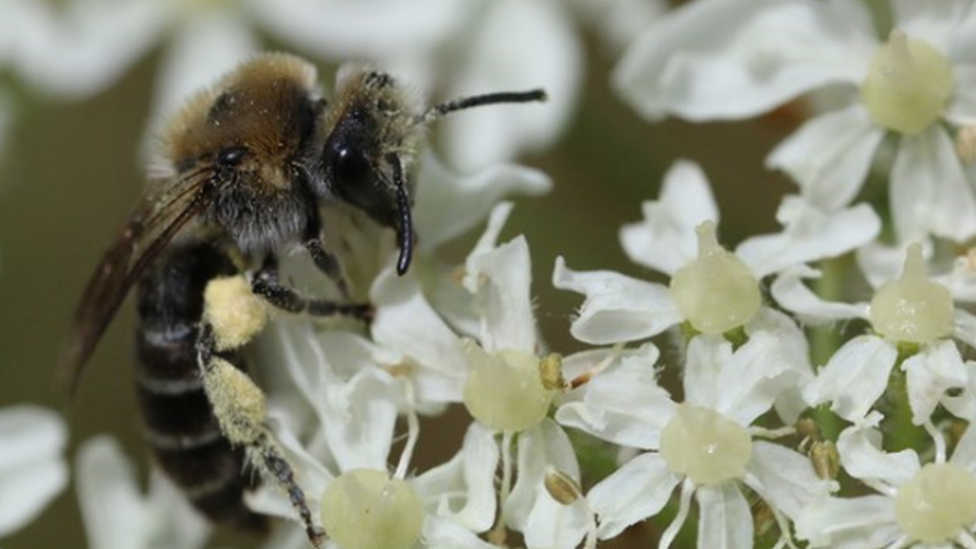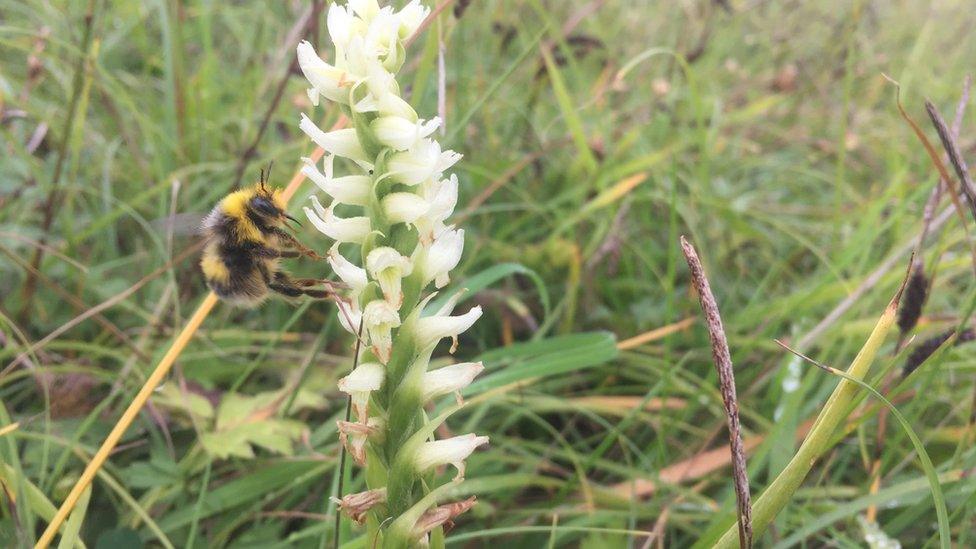Bees: Twenty one species in NI 'at risk of extinction'
- Published

Twenty one bee species in Northern Ireland are at risk of extinction unless action is taken, according to a report.
The study by conservation charity Buglife Northern Ireland examined historical and modern data.
It blames loss of wildflower habitats, pesticides, pollution and climate change.
Northern Ireland is home to many rare and threatened bee species.
'Worrying trends'
It supports the largest population in the UK of Northern Colletes, a priority conservation species.
The report highlighted the need for better recording and monitoring of bee populations, especially in County Tyrone.
"The Northern Ireland Threatened Bee Report has sadly highlighted some extremely worrying trends in our wild bees," said Anna Hart, conservation officer for Buglife Northern Ireland.
"Unless urgent action is taken, we are likely to see the extinction of some of these species over the next 10 years."
Ms Hart said the answer was to make more space for wildlife, including by restoring wildflower rich habitats.
There has been a steady decline in both the abundance and range of pollinators including bees, butterflies, moths and hoverflies.

Three of the UK's 25 bumblebee species are now extinct and a further eight are under pressure.
Two thirds of moths and more than 70% of butterflies are also in long term decline.
The conservation of pollinators is key to both the environment and the economy.
If you are reading this page on the BBC News app, you will need to visit the mobile version of the BBC website to submit your question on this topic.
Insect pollination of crops is estimated to be worth £440m in the UK alone each year.
Bee strong points in Northern Ireland include the Mourne mountains, the north coast, the species-rich grasslands of County Fermanagh, Rathlin Island and the shores of Lough Neagh.
- Published6 December 2018
